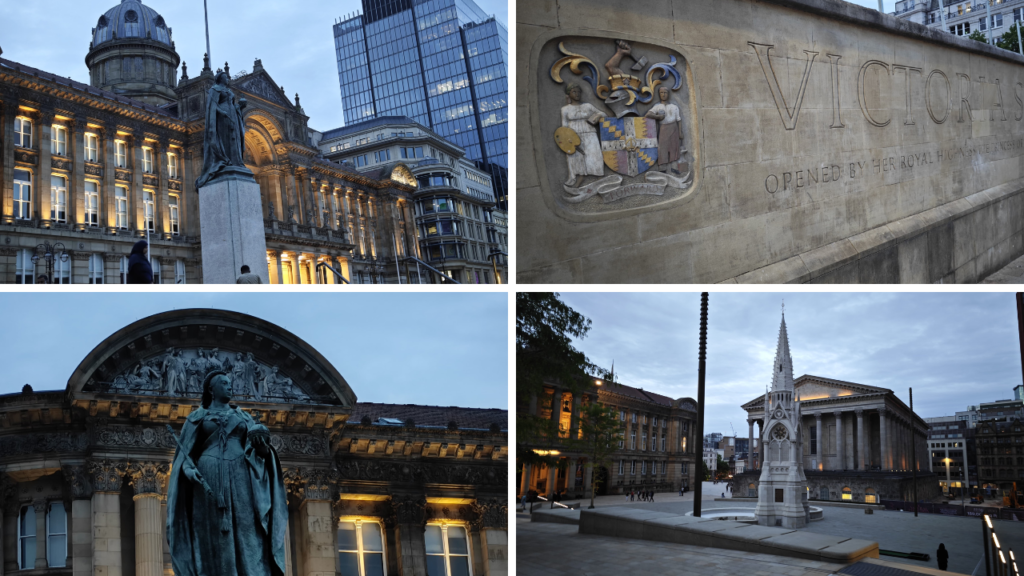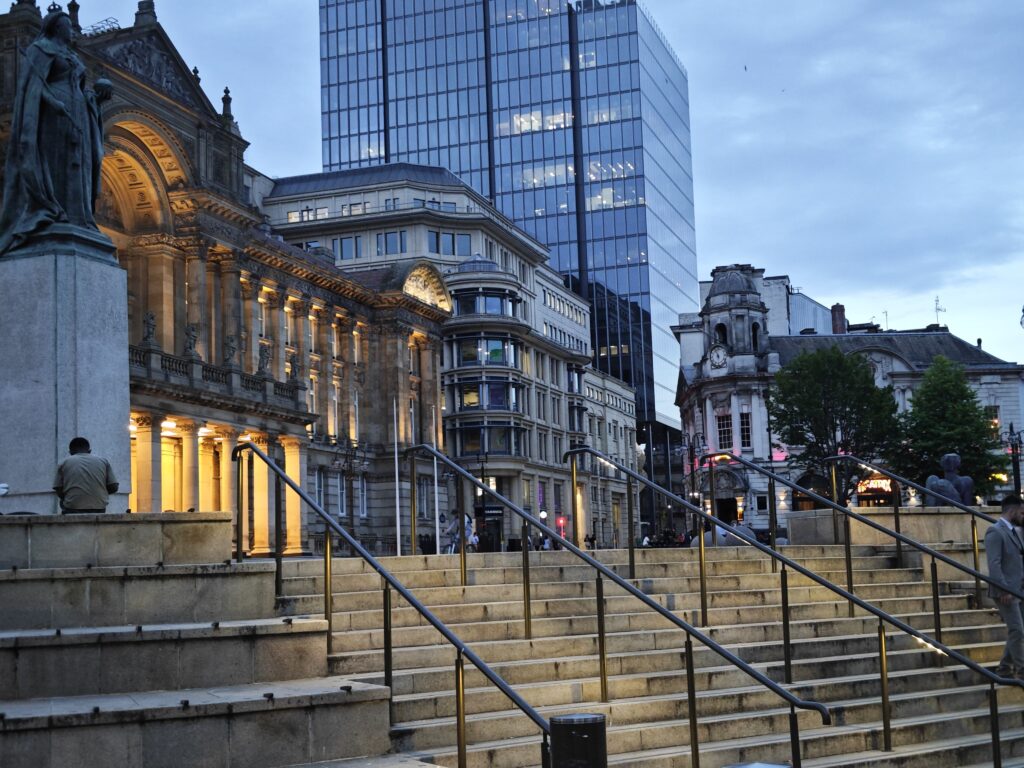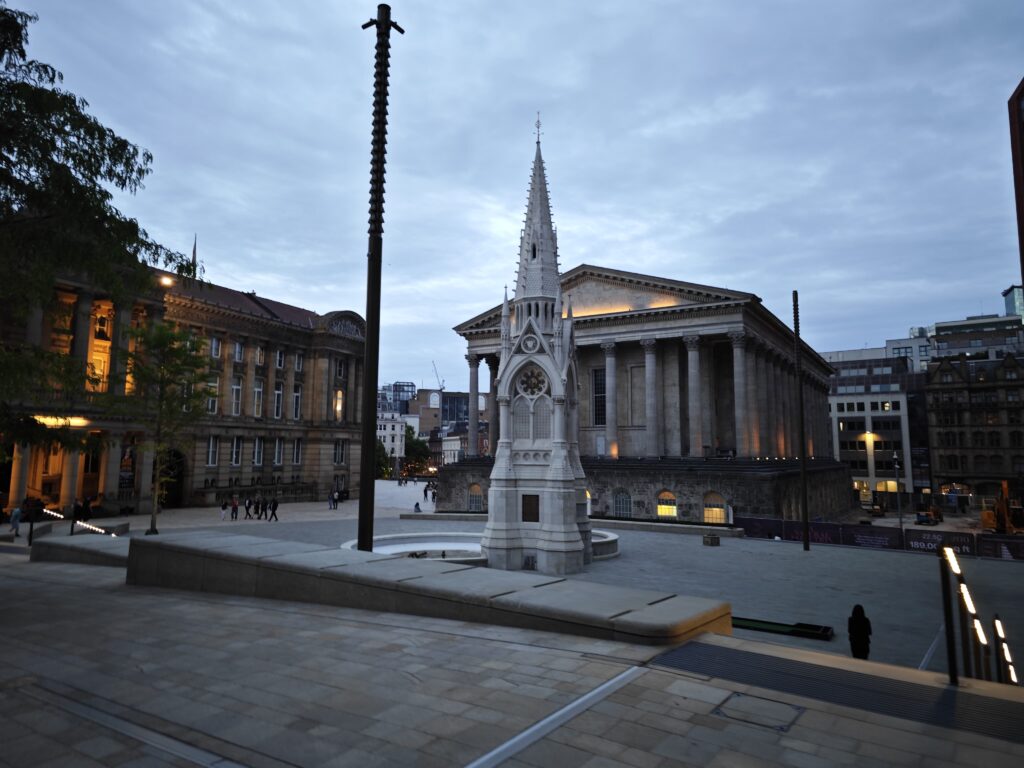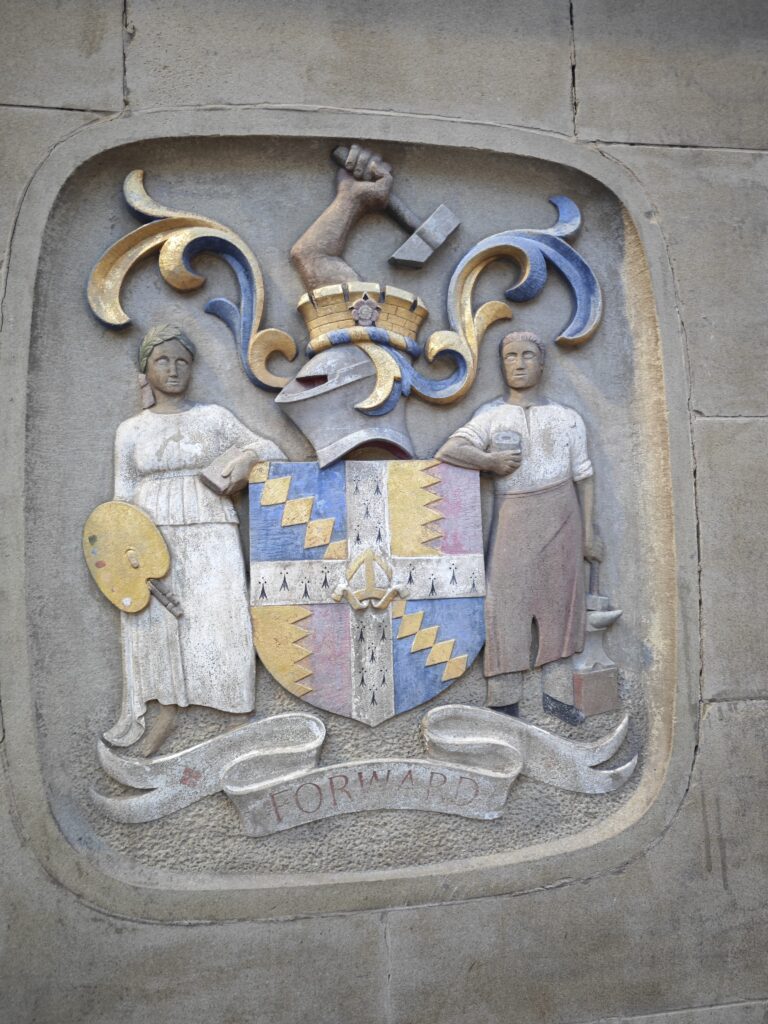
By Trisha Ghosal in Birmingham
After the heartbreak of Headingley and India’s 0-1 start to the Test series, the caravan has moved. So have we. From the steep stands of Leeds to the old soul of Birmingham. The second Test is around the corner, but today, before Edgbaston and toss sheets and press passes, something else demanded attention—something slower, softer, more profound.
Our first shoots from Birmingham were last evening—right at the intersection of Victoria Square and Chamberlain Square. It’s an area where history lingers like mist. Queen Victoria stands immortalised in bronze, her gaze frozen in imperial confidence. Not far from her, Joseph Chamberlain memorial looks out at the city he had once reformed, framed by columns and clock towers. Here, between old stone and modern glass, the empire still whispers.
And I, an Indian multi-sport journalist, stood there—camera ready, story prepped—reporting on cricket. A sport exported as part of the civilising mission, now returning with full force through the very people once colonised. There’s a strange poetry in that. The game they gave us; we turned into a language of identity. A weapon of joy.
As we were recording, I watched school kids run through the square. One wore an England football shirt, another an Indian cricket jersey. No tension. Just chatter. Just play. At a coffee shop while waiting for my coffee, I struck up a conversation with a local, a second-generation British Asian, who told me his grandfather moved to Birmingham from Punjab in the 1950s. “He didn’t speak English,” Rajan said, “but he knew Sunil Gavaskar.”
For families like his, cricket wasn’t just entertainment. It was a familiar rhythm in a foreign land. A bridge. A sense of home.
Also Read: Back to the Land of First Dreams: Covering Women’s Cricket in England
The contrast hit hard. A century ago, the Queen and her council decided how the colonies would behave. Today, we cheer for Indian cricketers on British soil—and not as visitors, but as the stars. India doesn’t just play cricket anymore. It defines it. And in places like Birmingham, where South Asian communities built lives from scratch, that reversal is deeply symbolic.
The weather was nice, a cool breeze blowing, the square chirpy as usual on a weekday. A street musician strummed a soft tune near the Hall of Memory. I stood still for a moment, just absorbing it all—history, memory, movement.
Tomorrow, I’ll be in Nottingham, covering the Indian women’s team’s practice session before their white-ball series begins against England. But today, in a city where empires once rose, I stood between the statue and the memorial and felt something shift.
Cricket is no longer the game of empire.
It’s ours now.
Follow RevSportz For More Colour Stories


